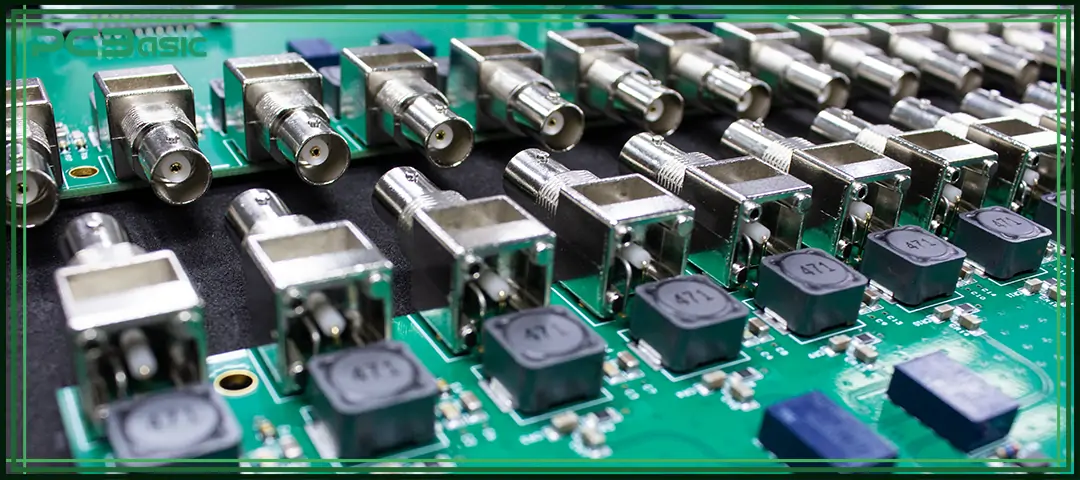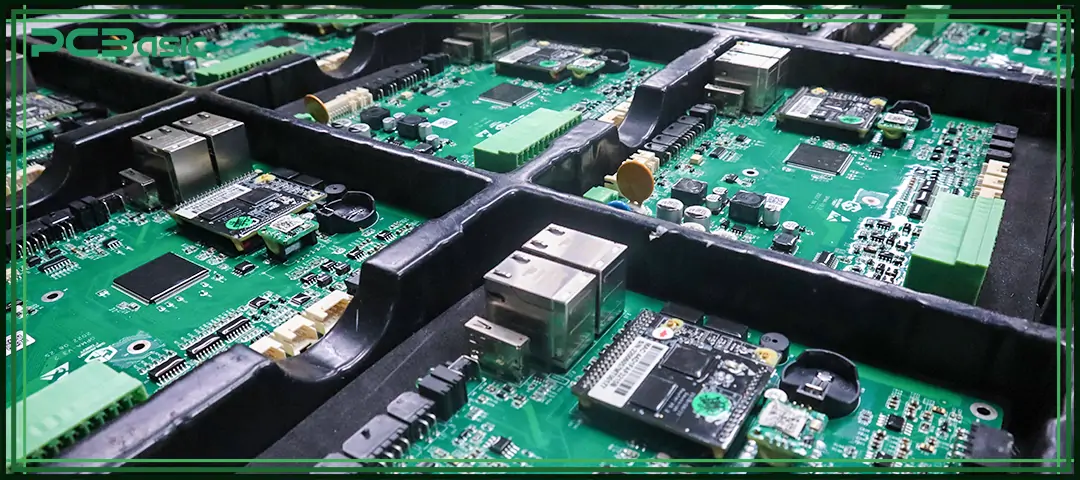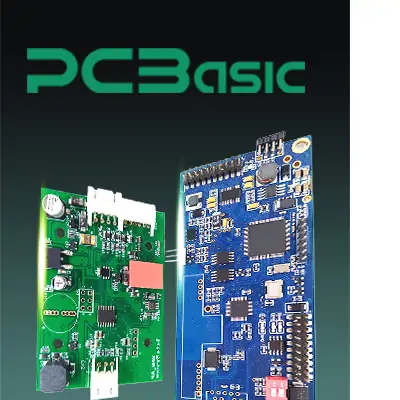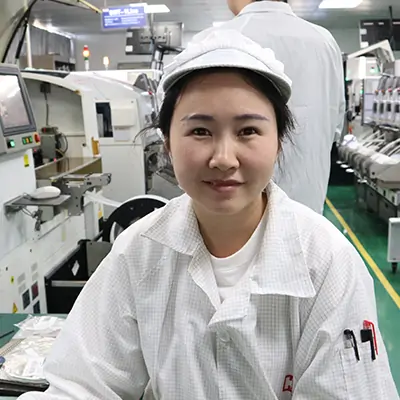Global high-mix volume high-speed PCBA manufacturer
9:00 -18:00, Mon. - Fri. (GMT+8)
9:00 -12:00, Sat. (GMT+8)
(Except Chinese public holidays)
Global high-mix volume high-speed PCBA manufacturer
9:00 -18:00, Mon. - Fri. (GMT+8)
9:00 -12:00, Sat. (GMT+8)
(Except Chinese public holidays)
HomePage > Blog > Knowledge Base > ODM Meaning Explained: What Is It and How It Differs from OEM, EMS, and CEM
In today's highly competitive global market, companies often encounter a key question when launching new products: Should we choose to design and produce them independently or entrust these tasks to professional third parties? When considering this question, terms such as OEM, ODM, EMS and CEM often come up, but the meanings of these terms are easily confused.
Among them, ODM is a model that has received increasing attention in recent years. So, what exactly is the ODM meaning? What are the specific differences between it and OEM, EMS, and CEM?
This article will focus on the ODM meaning and, from the perspective of practical application, introduce the definition, advantages and applicable scenarios of ODM. We will also make a detailed comparison between OEM and ODM, as well as their differences from EMS and CEM, to help companies understand the characteristics of different manufacturing models and choose the most suitable OEM and ODM solutions. Whether you hope to bring products to market quickly or focus on market expansion, understanding the true meanings behind these key words is an indispensable step when shaping a product strategy.

ODM is the abbreviation of Original Design Manufacturer. The ODM meaning refers to a company that is responsible for both designing and manufacturing the product from scratch. Such companies will first develop a complete product solution, which can be directly mass-produced, and then authorize other enterprises to sell under their own brand.
When cooperating with ODMs, customers can only make minor modifications, such as changing the brand logo, adjusting the packaging style, and modifying the color. However, the original design rights of the product still belong to the ODM. This cooperation model is very common in the fields of consumer electronics, accessories, home appliances and personal care products.
For companies that do not have a professional design team, have limited R&D budgets, or want to enter the market quickly, the original design manufacturer is a very practical choice. The ODM meaning usually represents faster development and lower investment costs, and is especially suitable for startups or small-scale brands.
To understand the ODM meaning, it is necessary to master several main characteristics of the original design manufacturer:
In the ODM model, the original design of the product belongs to the ODM. Customers cannot own the design rights; they can only obtain usage authorization or limited customization rights. This also means that the ODM has the right to sell the same product design to other clients, rebranded and repackaged under different names.
Customers usually can only make surface-level adjustments to the product, such as changing the brand name, modifying the packaging style or altering the product’s color. The product’s structure, function or technical changes cannot be modified. If deeper customization is required, it is advisable to consider switching to the OEM model.
The ODM products have been developed and do not need to be designed from scratch. Customers only need to select a plan, make simple modifications, and it can be quickly launched to market. This model is particularly suitable for enterprises that need to launch products in a short period of time.
When cooperating with an ODM, there is no need to invest a large amount of research and development funds, nor is it necessary to form an engineering team. Customers can directly use the design of the ODM, saving the human and financial costs of product development.
The products of the original design manufacturer have usually passed the tests in terms of safety and quality and obtained the corresponding certifications. This helps clients reduce delays in regulatory approval and lowers product launch risks.

Enterprises choose ODM solutions mainly because ODM services can bring multiple practical values.
One key point of understanding the ODM meaning is that it can significantly reduce the cost of product development. By using the existing designs of ODM, enterprises do not need to invest a large amount of money in research and development on their own. This means fewer design resources, simplified development processes, and lower trial-and-error expenses.
Time Efficiency
The traditional product development cycle may take several months or even longer. By using ODM services, enterprises can directly select existing designs, make simple adjustments quickly, and launch to market within a few weeks. This approach is highly suitable for enterprises that need to respond quickly to market trends.
ODM usually adopts standardized processes for large-scale production and has mature production lines and quality control systems. This structure can ensure consistent product quality, reduce error rates and minimize after-sales risks.
When the sales volume of the product increases, the enterprise does not need to look for new suppliers or adjust the design. ODM services provide flexible expansion support. The original design manufacturer can rapidly expand production capacity according to demand to ensure delivery capacity.
If a company wants to test a new market but is unsure whether to make a long-term investment, ODM services offer a low-risk option. By choosing ready-made products, enterprises can validate user feedback and market acceptance without investing in OEM design costs.
 About PCBasic
About PCBasic
Time is money in your projects – and PCBasic gets it. PCBasic is a PCB assembly company that delivers fast, flawless results every time. Our comprehensive PCB assembly services include expert engineering support at every step, ensuring top quality in every board. As a leading PCB assembly manufacturer, we provide a one-stop solution that streamlines your supply chain. Partner with our advanced PCB prototype factory for quick turnarounds and superior results you can trust.
OEM stands for Original Equipment Manufacturer. It refers to a manufacturing model where the customer (brand owner) provides the product design and specifications, and the OEM is responsible for producing the product based on these requirements.
In the OEM model, the brand owns the product design, intellectual property (IP), and brand name. The manufacturer only handles the production process. This model is commonly used in industries such as electronics, automotive, medical devices, and home appliances.
For example, A brand designs a pair of earphones, including the appearance, functions, and circuit diagrams, but does not have its own factory. So they find a factory with the right production capabilities to manufacture the product for them. This factory is called an OEM.
The terms OEM and ODM are often confused, but the differences are significant. Let’s break down the ODM vs OEM distinction:
|
Feature |
ODM (Original Design Manufacturer) |
OEM (Original Equipment Manufacturer) |
|
Design Ownership |
Owned by ODM |
Owned by the buyer |
|
Customization |
Limited to branding & cosmetic changes |
Fully customizable |
|
Time to Market |
Faster |
Slower (due to design phase) |
|
Development Cost |
Low |
High |
|
IP Ownership |
Typically held by ODM |
Held by the client |
|
Use Case |
Fast entry, branding focus |
Innovation, unique product strategy |
The manufacturing ecosystem includes other players beyond OEM and ODM. Here’s how EMS and CEM fit in and how they compare:
EMS refers to Electronics Manufacturing Services providers. These companies mainly offer contract manufacturing services for OEMs in the electronics sector. They are responsible not only for product assembly but also for a range of value-added services, such as DfX (Design for Excellence), PCB assembly, testing, and logistics. EMS providers typically do not own the product design or intellectual property. Instead, they manufacture based on designs provided by the customer. EMS is commonly used for high-volume, standardized production, such as smartphones, laptops, and other consumer electronics. These suppliers often work with major brands and focus on high-efficiency, low-cost, large-scale manufacturing.
CEM stands for Contract Electronics Manufacturer, and their main role is to produce electronic components and finished products for OEM clients. Similar to EMS, CEMs do not own the product design and manufacture strictly based on the customer's OEM design. The difference is that CEMs typically serve more specialized industries, such as industrial control, medical equipment, defense systems, and telecommunications. CEM providers usually have diverse manufacturing capabilities, allowing them to handle complex and low-to-medium-volume production. This type of manufacturer offers more flexibility and is well-suited for applications that require high standards of quality, reliability, and industry-specific certifications.
|
Company Type |
Design Ownership |
Services Provided |
Ideal For |
|
ODM |
Yes |
Design + Manufacturing |
Fast-market entry, low R&D capability |
|
EMS |
No |
Manufacturing + Logistics |
High-volume electronics production |
|
CEM |
No |
Contract manufacturing |
Industrial and specialized equipment |
The ODM meaning becomes easier to understand when directly compared with EMS and CEM. All three offer manufacturing services, but only ODMs provide the original design and own the intellectual property (IP). This allows them to license the design to clients. As a result, original design manufacturers act as a one-stop solution for both product development and production.
In today’s market, where speed to market and cost control are more important than ever, understanding the ODM meaning (Original Design Manufacturer) can create new growth opportunities for businesses. When it comes to OEM vs ODM, the key is not which model is better, but which one better fits your business goals.
If you want full control over your product, aim for long-term differentiation, and value intellectual property protection, then OEM services are the better choice. If your focus is on entering the market quickly, reducing investment risk, and keeping initial costs low, then ODM services may be the smarter option.
An experienced original design manufacturer can provide ready-made design solutions, lower minimum order quantities (MOQ), flexible production processes, and fast product launch support. Whether you're launching a private label or expanding your product line, understanding the ODM meaning is more important now than ever before.

Assembly Enquiry
Instant Quote
Phone contact

+86-755-27218592
In addition, we've prepared a Help Center. We recommend checking it before reaching out, as your question and its answer may already be clearly explained there.
Wechat Support

In addition, we've prepared a Help Center. We recommend checking it before reaching out, as your question and its answer may already be clearly explained there.
WhatsApp Support

In addition, we've prepared a Help Center. We recommend checking it before reaching out, as your question and its answer may already be clearly explained there.
